MEDICINA:
DE LA REVOLUCIÓN FRANCESA A LA INTELLIGENCIA ARTIFICIAL
Diapositiva 1: En pleno siglo XVIII en Francia médicos como François Quesnay y otros fisiócratas crearon la palabra economía, que dio lugar a expresiones como Laissez-Faire y Emprendedor. Proponían la idea de que los organismos humanos se pueden autorregular, lo que podríamos llamar homeostasia. Adam Smith los visitó antes de escribir su libro sobre el Mercado Libre. Eran todos liberales. Los liberales creían en la Libertad de Elección con respeto a la fe. Parecía que de manera natural esto conducía al Libre Mercado y a una revolución tecnológica.
El Liberalismo condujo a la Revolución Francesa y a la Medicina Clínica, que se centraba en una tecnología que contradecía el modelo médico de la época junto con la medicina de la Salud Pública que se basaba en técnicas. La ejecución de Luís XVI también demuestra algo más que era nuevo en aquel tiempo: fue ejecutado con una nueva tecnología.
Diapositiva 2: Unos años más tarde, en Lyon, los trabajadores de la seda se rebelan: están siendo sustituidos por las nuevas tecnologías y se quejan al mismo tiempo de la supresión de empleos y de la alienación que provocan las nuevas máquinas, dado que estas suprimen las posibilidades de ser creativo.
Diapositiva 3: Las reivindicaciones de los trabajadores de Lyon atrajeron la atención de Louis Villerme, el creador de la salud pública y de la medicina del trabajo. Conduce al mismo tiempo a Etienne Cabet a crear el Partido Comunista.
Diapositiva 4: En aquella época, la industrialización y la urbanización suscitaban un interés creciente por lo que hoy denominamos salud pública. Uno de los libros de salud pública más influyentes fue publicado por Friedrich Engels. En él describía las condiciones de la clase obrera en Inglaterra.
Diapositiva 5: Tres años más tarde estallaron revoluciones en toda Europa y Engels escribió junto a Karl Marx el Manifiesto Comunista. Creían que el Partido Comunista de Cabet era el futuro, movido por la alienación de la que se quejaban los trabajadores de Lyon. Hubo más médicos en las barricadas en Francia y en otras partes que economistas o políticos.
Las revoluciones de 1848 fracasaron y los comunistas que se libraron de la represión emigraron de Francia a Illinois.
Diapositiva 6: En Alemania, Rudolf Virchow pertenecía también a esta tendencia. Declaró que la política no era otra cosa que la medicina a gran escala.
Virchow era un liberal. Los liberales eran progresistas, por oposición a los conservadores. Estaban a favor de la ciencia y la tecnología.
Virchow consideraba que los médicos, más que el proletariado constituían la clase revolucionaria. Los liberales y los comunistas que creían en el sufragio universal y en la educación, pensaban que el Estado acabaría por marchitarse. El viejo Estado se marchitó. Las revoluciones fracasaron, y el Partido Comunista Francés creyó que Francia era una causa perdida y emigró a Illinois, justo al sur de donde está hoy la ciudad de Chicago.
Diapositiva 7: En otros tiempos se creía que la historia la hacía Dios. Después Dios fue sustituido por los “Grandes Hombres”. Marx añadió el capital y la tecnología a estas fuerzas motoras pero ¿a cuál le dio más peso? ¿A la lucha de clases o a la tecnología?
Diapositiva 8: En el corazón de toda tecnología hay un algoritmo, un “si X, entonces Y”. Los algoritmos también se encuentran en el corazón de la técnica. Más de 60 años después, Max Weber, un político liberal llamó la atención sobre la creciente burocratización de los gobiernos. Al igual que la tecnología es expansiva, también lo es la técnica. Weber no veía límites a su expansión, y temía que quedaríamos encerrados en una cárcel de hierro.
Del mismo modo que Marx culpó a los capitalistas de la alienación tecnológica, Weber veía el socialismo como algo que conducía a una alienación basada en la técnica.
Marx pasó mucho tiempo con médicos, pero nunca escribió sobre ellos. Weber sí lo hizo. Dijo que la medicina se está convirtiendo en una empresa técnica: podemos traer gente al mundo y acabar con sus vidas de una manera más eficiente. Se ha hecho posible terminar con las vidas que no vale la pena vivir. Zygmunt Bauman causó consternación cuando dijo que Weber anticipó el Holocausto, que comenzó sin duda como un experimento de salud pública.
Diapositiva 9: Las narrativas históricas sobre el Neoliberalismo suelen empezar con las reuniones de la Mont Pelerin Society a partir de 1947. Se cita la Vía de Hayek hacia la Servidumbre. Hay reuniones anteriores y otras personas: von Mises y sobre todo Milton Friedman y la Escuela de Chicago.
Los neoliberales son considerados como los que desean restaurar el Libre Mercado, y hacer retroceder la Planificación Central Soviética y la invasión de la social democracia y la intervención gubernamental en el Oeste.
Esto no es neoliberalismo. Si la variedad de 1848 es el Ur Liberalismo, en 1948 tuvimos un Liberalismo transicional. A menudo se cree que los liberales transicionales quieren hacer retroceder la economía a 1848, pero su retórica se centra más en hacer retroceder los niveles de burocracia a los de 1848.
Como dijo Milton Friedman, actualmente tenemos gobiernos de burócratas para burócratas.
Diapositiva 10: Desde 1848 ha cambiado algo más que la emergencia de la burocracia. En 1946 apareció la Cibernética, lo que ahora llamaríamos ordenadores. Ahí es donde el Algoritmo se anunció a sí mismo. Los entusiastas de la cibernética creían que los algoritmos que hacen funcionar los termostatos también se podían encontrar en la homeostasis y quizás podrían apoyar el Mercado Libre. Diagramas de flujo como este se convirtieron en los fundamentos de una nueva técnica de gestión.
Diapositiva 11: A partir de 1946, una serie de conferencias de la organización bautizada “Josiah Macy”, patrocinadas por el ejército norteamericano, preparó el terreno para el Mejor de los Mundos descrito en estas citas:
Probablemente la cibernética ha llegado justo a tiempo para fortalecer las lamentablemente blandas ciencias sociales y a salvar nuestra sociedad industrial libre de los peligros de caer en la anarquía por sus inestabilidades o de evolucionar hacia un sistema totalitario.
Denis Gabor
Aplicamos las competencias adquiridas en las ciencias duras a la solución de los problemas duros en las ciencias blandas. La cibernética ha llegado para apoyar la ciencia de la regulación en el sentido más general.
Heinz Foerster
Diapositiva 12: Los años de postguerra fueron la década milagrosa del descubrimiento de nuevos fármacos: psicótropos, antihipertensivos, antibióticos, hipoglucemiantes, esteroides y muchos otros, todos ellos desarrollados sin un ensayo clínico, sin escalas de medida y sin marcadores subrogados. Fármacos que curan los problemas que no nos permiten vivir la vida que queremos vivir, diferentes de los fármacos que aparecen en la actualidad.
Entonces sobrevino la crisis de la talidomida. Esta es una diapositiva clave. Es el Despacho Oval y un galante John Kennedy que acaba de firmar la Ley de Alimentos y Fármacos de 1962. Está de pie y entrega la pluma con la que firmó a Frances Kelsey, la persona que bloqueó la autorización de la talidomida, la única mujer en la sala.
Kelsey había salvado a los EEUU del desastre utilizando la Ley de 1938, que se centraba en seguridad. Ahora su juicio profesional era sustituido por una Ley que colocaba un algoritmo en el centro de las decisiones que desvió o sesgó el desarrollo hacia la eficacia. Diseñada para contener a las compañías farmacéuticas, la nueva Ley entregaba el control a las compañías. La ciencia de la regulación se convirtió en cibernética.
Diapositiva 13: Este ensayo clínico (EC) controlado con placebo dirigido por Louis Lasagna demuestra lo que ocurrió. En este ensayo la talidomida fue un hipnótico eficaz, pero se pasaron por alto la agitación, las tendencias suicidas y la disfunción sexual que causa este fármaco, efectos todos ellos muy parecidos a los de los ISRS.
Dos años más tarde, Lasagna que era el que había incorporado los EC a la nueva Ley como un obstáculo para impedir una nueva crisis como la de la talidomida, reconoció que a pesar de ello la talidomida había superado este mismo obstáculo.
Diapositiva 14: Otras técnicas conductuales dieron lugar al marketing y a la propaganda i apuntalaron un montón de políticas sociales. Todas ellas se basan en técnicas que generan reflejos: Si X, entonces Y.
El objetivo del marketing es poseer el mercado, es decir, colonizar nuestro pensamiento. La propaganda es esencialmente marketing y lo mejor de esta es su parte invisible.
Diapositiva 15: Aquí tienen a Galbraith, un liberal de izquierdas haciendo un llamamiento a modificar las corporaciones. Sus directores ejecutivos ya no son emprendedores. Son burócratas. Ya no compiten para atender nuestras necesidades, compiten para crear nuestros deseos.
Diapositiva 16: Más adelante Milton Friedman, un liberal de derechas hizo el siguiente comentario sobre las empresas sanitarias:
“Los intelectuales han aprendido la letra de la canción, pero todavía no conocen la música. Desde ambos lados del Atlántico predicamos el individualismo y el capitalismo competitivo pero practicamos el socialismo”.
La mayoría de los ciudadanos de EEUU estarán de acuerdo en que acceder a la atención sanitaria es en la actualidad una experiencia kafkiana.
Diapositiva 17: El neoliberalismo comienza propiamente en Chile a finales de los setenta. Para hacer frente a una inflación rampante y tras su golpe de estado, Pinochet preguntó a la Escuela de Chicago, que le sugirió adoptar las medidas de Milton Friedman de control monetario como un objetivo. Esto era el monetarismo. Nunca se había tratado a un país o a su economía instalando un termostato. Si las cifras de dinero puesto a disposición iban en la dirección deseada, nadie parecía preocupado por nada más, algo parecido a que si la temperatura de la casa es la correcta, nadie se preocupa de si hay fugas de calor.
Los objetivos no crean un mercado libre en el que podamos elegir. Crean una competencia en la que los esfuerzos se dirigen a atender las necesidades de las corporaciones, en lugar de atender a nuestras necesidades. El resultado fue en realidad lo más alejado de la Libertad de Elección de Milton Friedman.
Diapositiva 18: Entones el gobierno conservador entrante en el Reino Unido adoptó el monetarismo, una vez más con resultados desastrosos. Los objetivos tienen una lógica interna que dificulta argumentar contra ellos, no había habido nada parecido antes de su adopción.
Se tomaron medidas para crear un mercado de la sanidad, y los costes administrativos de 3% se convirtieron en más de 10%.
Diapositiva 19: En las corporaciones, cualquier idea de bien común o de alcances sociales fue sustituida por el objetivo de maximizar el valor de las acciones. No estoy seguro de que estos objetivos fueran una trama capitalista, pero todos los objetivos como este crean más oportunidades para las personas con poder que para las que no lo tienen.
Diapositiva 20: Una de las cuestiones que crea más confusión referente al neoliberalismo es que una parte significativa de la gente de izquierdas también es considerada neoliberal. Foucault, por ejemplo, en gran parte porque subrayó el desplazamiento desde el gobierno por el liderazgo al gobierno por los números: fija un objetivo y confía en los números.
Políticos como Clinton y Blair en la izquierda se sentían cómodos fijando objetivos y dejando que las corporaciones privadas compitan con los servicios públicos para cumplirlos.
Políticos “de izquierda”, como Macron y Monti pueden ser actualmente calificados de tecnócratas, una élite tecnocrática, mientras que los políticos de derechas se han convertido en populistas.
Diapositiva 21: La creación de objetivos hizo más predecible el resultado de las apuestas (sobre inversión de capitales), lo que atrajo a fondos especulativos dotados de un enorme poder financiero, capaces de forzar a los países a obedecer sus dictados.
Para protegerse de los ladrones que arrancan bolsos, roban equipajes y fuerzan cajas de seguridad, debe atar todos sus bienes con cuerdas, cerrarlo todo con candado, mantenerlo todo atornillado.
Para los propietarios esto es de sentido común elemental.
Pero cuando llega un ladrón fuerte, coge el conjunto, lo carga a la espalda y prosigue su camino con un solo temor: que las cuerdas, candados y tornillos no cedan.
Chuang Tzu, 323 antes de nuestra era.
Diapositiva 22: Objetivos y algoritmos: el neoliberalismo o quizá el neomedicalismo llegaron al mismo tiempo a la medicina y a la política. Uno de los primeros ejemplos más claros fue la idea de tratar una presión arterial ligeramente elevada, en lugar de tratar solamente la hipertensión maligna. Fue algo como asegurar que todo el mundo lleve cinturón de seguridad, y no que lo lleven solamente los que conducen peligrosamente. La medicina podía comenzar a prevenir problemas, en lugar de tratarlos después de que ocurrieran.
La idea original era tratar la presión arterial alta mediante la restricción de la ingesta de sal, pero las compañías farmacéuticas sustituyeron la restricción de sal por el tratamiento farmacológico. Dar un veneno a una persona sana es algo muy distinto de restringir la ingesta de sal.
Diapositiva 23: ¿Por qué una balanza? Hacia 1860 en Francia se comenzó a pesar a la gente. Una década después se describió una nueva enfermedad, la anorexia nerviosa. Se hizo más frecuente en los años veinte del siglo siguiente, y en las farmacias proliferaron las escalas con láminas que indicaban el peso ideal según la altura y el sexo. Entonces aumentó el número de trastornos de la alimentación en los sesenta, cuando todos teníamos escalas de peso en el baño. Esto solo ocurrió en países en los que había escalas de peso, y no en otras partes.
De golpe las mediciones se convirtieron en la enfermedad, en el asma, la diabetes, la hipertensión, la densidad de los huesos, los niveles de colesterol, del mismo modo en que las escalas de peso condujeron a la anorexia nerviosa. En lugar de considerarlas factores de riesgo, fueron convertidas en enfermedades médicas crónicas. Dejamos de llevar nuestros problemas al médico en busca de ayuda para vivir la vida que queríamos vivir, las clínicas comenzaron a invitarnos a los cribados, y nos dieron unos problemas que no sabíamos que teníamos.
Se presionó a clínicas a cribar y tratar. Los que lo rechazaban podían ser sacados de la lista o se les podía negar un seguro. Tratar el colesterol o la presión arterial puede hacerse de manera más fiable que tratar un infarto o un ictus, pero no salva vidas.
Diapositiva 24: En 1970 la palabra “riesgo” apareció 200 veces en los títulos de artículos universitarios. En 1990 figuraba en 20.000 títulos. Ahora tenemos sociedades de riesgo, como Ulrich Bech nos había anunciado. Corporaciones y consultores trabajaron en cómo sacar provecho de esto. Los números –al igual que la hipótesis de los niveles bajos de serotonina– crean en la gente la obligación moral de alcanzar los que son adecuados.
Diapositiva 25: En la década de 1780 en Francia hacían furor el mesmerismo y la hipnosis. En cierto modo la hipnosis contribuyó a desencadenar la Revolución Francesa, pues daba a entender que el orden social era mantenido por una forma de trance hipnótico.
La hipnosis es uno de los primeros ejemplos de técnica conductual. Funciona según la lógica Si X, entonces Y. En la actualidad los números médicos hipnotizan a los médicos y a todos, sobre todo porque dar un fármaco ofrece un reflejo conductual como respuesta a los números anormales.
Más de un 90% de los beneficios de las compañías farmacéuticas son obtenidos en este dominio.
Diapositiva 26: Desde 1990 el número de medicamentos comercializados para tratar el infarto, el ictus o las psicosis ha sido escaso. Pocos salvan vidas. Como comentó Goldman Sachs, salvar vidas no es un buen modelo de negocio.
Diapositiva 27: ¿Qué hace una diapositiva sobre laxantes en medio de una charla seria? Los laxantes pueden actuar de cuatro maneras diferentes, y solo una de ellas tiene probabilidad de ayudarle a aliviar el estreñimiento. Tome una de las erróneas y puede terminar con estreñimiento resistente al tratamiento.
Los fármacos no son balas mágicas. Ofrecen principios terapéuticos.
Ocurre exactamente lo mismo con los antihipertensivos, hipoglucemiantes, antidepresivos y casi todos los fármacos que consumimos. En la actualidad muy pocos médicos consideran que necesitan tener las habilidades clínicas para decidir cuál de estos fármacos es el que usted debe tomar. La FDA los ha declarado a todos antihipertensivos, de modo que si usted tiene la presión alta, los médicos los recetan. Y cuando los primeros tres no surten efecto pero el cuarto sí lo hace, el médico le deja en tratamiento con los cuatro, porque son todos antihipertensivos.
Esto es malo para usted y bueno para las compañías. Combinado con el tratamiento de otros factores de riesgo, ha dado lugar a la polifarmacia, un fenómeno descrito por primera vez en el 2000.
Diapositiva 28: Como dice la diapositiva, para mantener un estado de hipnosis debe evitar los efectos adversos. Si alguien se convierte en suicida mientras toma un antidepresivo, se puede persuadir al médico y al paciente de que el trastorno bipolar necesita un mayor número de
Diapositiva 29: En los ensayos clínicos con ISRS hay más muertos en el grupo tratado que en el grupo placebo. Cuando decimos que un fármaco funciona, nos basamos en los resultados obtenidos con variables subrogadas como la Escala de Hamilton. Aquí pueden ver a Hamilton diciendo que las listas de comprobación como esta estandarizarán las entrevistas, lo que puede tener su lado bueno y su lado malo.
Diapositiva 30: Las listas de comprobación producen entrevistas estandarizadas pero posiblemente desastrosas. Por ejemplo, la escala de Hamilton tiene un apartado sobre suicidio. La tendencia suicida puede ser consecutiva a la enfermedad o al fármaco. Si es causada por el fármaco se debe puntuar cero. Si es causada por la enfermedad puede convertirse en 3 o 4 puntos. Si se marca “sí” en la pregunta sobre tendencia suicida, por defecto se atribuye a la enfermedad.
Tanto la enfermedad como la medicación pueden afectar el sueño, las relaciones sexuales, la ansiedad y la depresión. Una entrevista científica tiene multitud de opciones que exigen muchos juicios.
En los ochenta íbamos al médico con problemas para los que buscábamos ayuda para vivir las vidas que queríamos vivir. Ahora las escalas de evaluación, que a veces se encuentran ya en la sala de espera, promueven que los médicos produzcan unas cifras para las que el medicamento de una compañía puede ser una respuesta adecuada. Nuestras entrevistas ayudan a los pacientes a vivir la vida que Pfizer quiere que vivan. Esto ya no es medicina.
Diapositiva 31: Aquí pueden ver la página sobre síndrome de estrés postraumático (PTSD en inglés) de un documento de 30 páginas que recoge los artículos en curso de elaboración sobre Zoloft (sertralina). Estos artículos tienen por objeto capturar los mercados, no informar sobre cómo usar Zoloft de manera prudente.
Pfizer hizo 4 ensayos clínicos con Zoloft en el tratamiento del PTSD. Todos negativos. La FDA lo autorizó sobre la base de dos ensayos con un efecto beneficioso mínimo en mujeres. Estos dos buenos mordiscos son lo que luego se publicó. A la derecha se pueden apreciar bajo la palabra Status dos artículos ya terminados que serán enviados a las mejores revistas. A la izquierda se puede ver TBD (to be determined). Pfizer todavía tiene que decidir los nombres que ayudarán a vender más Zoloft.
En todas las especialidades médicas los estudios sobre medicamentos patentados son escritos por autores fantasmas. Los artículos sobre antidepresivos en niños son escritos por fantasmas o por la compañía, y existe una discordancia completa entre el contenido publicado y los resultados, la mayor discordancia en toda la ciencia. El crecimiento del consumo de estos fármacos entre adolescentes se basa en estas publicaciones, con resultados previsiblemente malos.
Diapositiva 32: Esta figura de un trabajo de Erick Turner publicado en 2008 muestra los “ensayos” en adultos publicados sobre varios antidepresivos. Casi todos ellos indican que los fármacos funcionan bien y son seguros. Fíjense en la columna correspondiente a la sertralina, la tercera comenzando por la derecha. Muestra dos estudios –el mínimo necesario para conseguir la autorización–.
Diapositiva 33: Esta otra figura muestra los ensayos sobre estos fármacos tal como los evaluó la FDA. Un 46% son negativos. Muchos que habían sido publicados como positivos eran en realidad negativos, a los que se debían añadir los ensayos negativos no publicados. Fíjense en la columna de la sertralina: sólo un estudio positivo.
¿Por qué la FDA no dice nada sobre esto? Bien, si la FDA dijera que los ensayos son negativos las compañías podrían ser demandadas por fraude, o multadas, como ocurrió con el estudio 329.
Actualmente la mayor concentración de noticias falsas en la tierra se centra en los fármacos que los médicos recetan. Recuerden, la mejor propaganda es la invisible. Estos artículos se publican junto a lustrosos anuncios de fármacos cuya función es distraerle del verdadero anuncio.
Diapositiva 34: En 1991 la industria farmacéutica fabricó el arma más novedosa para librarse de los efectos adversos. En el año anterior, tres médicos de Boston afirmaron que la fluoxetina había causado comportamiento suicida en 6 personas. Con un análisis detallado de los casos y la aplicación de criterios tradicionales para determinar la causa y efecto, este artículo señaló sin lugar a dudas que la fluoxetina puede convertir a algunas personas en suicidas.
Muchos otros grupos publicaron hallazgos similares. Yo mismo publiqué dos casos de hombres que fueron expuestos, des-expuestos y reexpuestos a un ISRS. No hay otra explicación de lo que les ocurrió que no sea que los causó la fluoxetina. Esto fue Medicina Basada en lo Evidente.
En un artículo en el BMJ, Lilly, fabricante de fluoxetina, anunciaba que el análisis de sus ensayos clínicos no mostraba pruebas (evidencias) de que la fluoxetina convierta a la gente en suicida. Por lo tanto los casos que se notificaban eran tristes pero anecdóticos, y el plural de anécdotas no es datos. El problema era la depresión, no la fluoxetina. Los ensayos clínicos son la ciencia de la causa y efecto. Se preguntaba a médicos, público, medios de comunicación y políticos si iban a creer en la ciencia o en las anécdotas.
Este fue un momento de creación de conocimiento que probablemente recibió aportaciones de todas las compañías, y quizá también de la FDA. Este artículo creó la Medicina Basada en la Evidencia.
En realidad la frase original es el plural de anécdotas equivale a datos, de otro modo Google no funcionaría.
La idea según la cual la enfermedad es la responsable de los intentos de suicidio y suicidios en voluntarios sanos es difícil de creer, pero las compañías pueden engrasar a expertos para que lo digan.
Mi idea clave es que el artículo que describía los 6 casos es la ciencia, y que los datos de Lilly son un artefacto. Les reto a responder a lo siguiente: ¿Qué se va a creer? ¿la ciencia o el Artefacto?
La ciencia de la medicina se basa en la formulación de juicios duros. Los juicios realizados con la estrategia de algoritmos, combinados con estadísticas incorrectas, crea artefactos, no ciencia.
Lilly había manipulado los resultados de los ensayos. Cuando se obtienen los resultados detallados, se puede comprobar que la Medicina Basada en lo Evidente se reconcilia con la Medicina Basada en la Evidencia, tal como sería de esperar con la ciencia.
Para la ciencia una incompatibilidad no es un problema. Sin embargo, Lilly no se dedicaba a ser científica, es decir, a resolver observaciones discrepantes. Su argumento es religioso –dogmático– nos prohibieron creer lo evidente para nuestros sentidos.
Peter Drucker, el decano del marketing nos enseñó que el objetivo del marketing no es aumentar las ventas de Prozac, sino poseer el mercado. Este fue el momento en que la industria se convirtió en propietaria de los servicios sanitarios.
Esta propiedad permite a las compañías dictar cuáles son los riesgos, los efectos beneficiosos y los saldos que se obtienen con los fármacos. Les permite forzarnos a vivir las vidas que ellas quieren que vivamos, en lugar de comprometerse con el negocio arriesgado y escasamente productivo de producir productos que nos ayuden a vivir las vidas que queremos vivir. Creer en este Artefacto es profundamente alienante.
Diapositiva 35: Hay que añadir un elemento más a la ecuación. Las industrias de servicios aparecieron en los años cincuenta. Hasta 1980 nadie consideraba que la sanidad fuera una industria de servicios: los médicos eran profesionales que emitían juicios del mismo modo en que podría hacerlo un juez. Pero las industrias de servicios tienen gestores. En los años ochenta la sanidad incorporó a los gestores.
El ejercicio de la prudencia clínica, la joya de la corona de la sanidad, se convirtió en un problema para los gestores. A los gestores, aseguradoras, políticos y cada día más el público, no les cabe en la cabeza la idea de sacar un efecto beneficioso de un veneno.
Antes de 1980 los clínicos movilizaban los recursos de la organización para la que trabajaban con el fin de manejar los riesgos evocados por su condición. Ahora, en cambio, se puede sentir de manera palpable que los clínicos manejan los riesgos que usted le plantea a la organización.
Diapositiva 36: Los gestores gestionan lo que pueden medir. Para ellos las cifras tienen una pátina de oro científico. Somos protagonistas de la historia del Rey Midas: este recubrimiento de oro es incompatible con la atención al ser humano y con la vida.
Esta gobernanza basada en los números es la esencia del neoliberalismo que comenzó en Chile y en Gran Bretaña: tratar los números independientemente de lo que le pase al país o a las personas. La medicina es el mejor sitio para presenciar este fenómeno y sus efectos deletéreos, agravado por el hecho que hacer una reverencia ante un algoritmo de oro inhibe a cualquiera de sacarnos de este desierto en el que ahora vagamos.
Diapositiva 37: Una vez un médico ha aceptado seguir una guía de práctica clínica, ya no se le puede hacer pensar. Los médicos se han convertido en burócratas, que siguen una ética burocrática que consiste en hacer fielmente lo que los líderes han decidido.
Por el contrario, la esencia del profesionalismo liberal consistía en ser independiente de los poderes y de sugerir una dirección. El liderazgo ya no existe, y esto crea un vacío.
Diapositiva 38: ¿Cómo interrumpir este trance? ¿Cómo resituamos a médicos, abogados y políticos –los dirigentes– en una posición de profesionales liberales en lugar de burócratas o técnicos?
El momento en el que aparecen los efectos adversos de fármacos y dispositivos es el momento crítico. Es entonces cuando se puede romper el trance hipnótico, o también se puede profundizar.
Diapositiva 39: El trance se puede romper mediante el contacto personal. Si les hablo de recetas o de resultados de fútbol, se puede romper el trance. El elemento clave es un ejercicio de juicio: si ejercita su capacidad de juicio esto será incompatible con estar en trance.
Diapositiva 40: En 2007 sufrimos una crisis financiera, consecuencia de la financiarización que había sido creada por los objetivos. Es mucho más fácil invertir el capital en tratar objetivos como la presión arterial o la tasa de inflación que sobre incertidumbres como tratar a personas con un infarto o dirigir un país.
Ahora tenemos una crisis médica, consecuencia de la medicamentalización creada por los objetivos. La polifarmacia apareció en el radar por el 2000, y nos sorprendimos al darnos cuenta de que mucha gente tomaba tres o más fármacos cada día del año. Ahora tenemos fármacos que persiguen otros fármacos mientras la esperanza de vida cae.
¿Se puede esperar que el sistema haga algo sobre todo eso? En 2007 el Banco de Inglaterra se enfrentó a una recesión que se avecinaba y a una tasa de inflación marginalmente alta. Se reunieron para decidir qué hacer con los tipos de interés. El grupo votó por 7 a 2 a favor de aumentar los tipos para reducir la inflación. Esto desencadenó una recesión casi inmediata y los tipos de interés se dispararon. Los hechizos hipnóticos pueden ser difíciles de romper.
Diapositiva 41: esta gráfica muestra la caída de la esperanza de vida en EEUU desde 1980, el año en que comenzamos a tratar los números. Este es el año en que comenzamos a tomar más y más medicamentos, y en que la atención sanitaria se transformó en servicios sanitarios dirigidos por gestores.
Tratar los factores de riesgo se llama medicina preventiva. Los factores de riesgo son denominados patologías médicas crónicas, y esta combinación de palabras podría hacerle pensar que cada día mantenemos a más gente en vida. Esto no es cierto.
Actualmente en EEUU casi la mitad de las personas de 45 años o más recibe 3 o más fármacos diferentes cada día del año, y casi la mitad de los de 65 años o más toma 5 fármacos cada día del año. Sabemos que reducir su carga de medicación puede reducir la tasa de ingreso hospitalario, puede mejorar la calidad de vida y la esperanza de vida. La principal tarea de los médicos hoy es reducir la carga de medicación.
Diapositiva 42: Cuando la piloto que ven aquí notifica un problema, los sistemas de seguridad le prestan atención, porque saben que si no lo hacen no querrá volar, por las consecuencias potenciales para ella.
Jane Frazer es la presidenta i directora general de Citibank. Desde la crisis financiera, los banqueros disponen de un sistema de alerta precoz. ¿Quién sabe si sirve? La crisis financiera estuvo ligada a un peligro moral. Sabiendo que si el sistema reventaba usted y yo sufriríamos, pero ellos seguirían cobrando sus pluses y primas, los banqueros estaban externalizando el riesgo. Esto obstaculizó que hicieran lo adecuado o lo valiente.
Si la médica de la izquierda notifica un problema, nadie le presta atención. Ella también externaliza el riesgo poniendo píldoras en nuestras bocas. Esto es moralmente peligroso. Si un fármaco parece demasiado bueno para ser verdad, probablemente lo sea.
Diapositiva 43: La principal necesidad médica actual consiste en reducir nuestra carga de medicación. Este fotograma de la película Hurt Locker (En tierra hostil) muestra que es peligroso. Muchas de las bombas que toma la gente explotan cuando son retiradas. Hay que reseguir las cascadas de prescripción hasta su origen, para identificar cuál es el único antihipertensivo que necesita aquella persona.
El o la paciente es el “lugar” en el que está ocurriendo este experimento científico. Posee las claves vitales sobre el camino a seguir. Este tipo de medicina necesita basarse en las relaciones y no en las “evidencias”. Los ensayos clínicos y algoritmos no nos pueden ayudar aquí. Nos pueden llevar a consumir un fármaco, pero no a dejar de tomarlo.
Diapositiva 44: La magnífica descripción de Vaclav Havel sobre la manera cómo los que no tienen poder son empujados a la disidencia es una excelente manera de comenzar, pero la disidencia personal no es suficiente.
Como dicen Zygmunt Bauman aquí a la izquierda y George Oppen a la derecha, hay que tender la mano a los demás.
Ahí es donde los efectos adversos de los medicamentos nos ofrecen una ventana a nuestro problema: una oportunidad para acompañar a alguien, pero no solo para sentirse bien con este alguien. Debe haber además un compromiso y un esfuerzo para buscar la verdad. Algo que se aparta de las métricas bidimensionales de eficacia para alcanzar algo cooperativo, que paradójicamente es casi siempre mucho más eficiente.
La identificación de los acontecimientos adversos nos ofrece una oportunidad de ser éticos, y una oportunidad de ser científicos.
Diapositiva 45: esta imagen del telescopio James Webb nos muestra que desde la genética a la astronomía la ciencia procede hacia la individualidad: desde el brillo blanco de la Vía Láctea u otras galaxias, a cada una de las estrellas. El empleo de algoritmos y de ensayos clínicos en medicina está haciendo justo lo contrario: colapsa la individualidad. Los servicios sanitarios están dirigidos a objetivos concretos, pero no se basan en pruebas: es incompatible ser un científico clínico y al mismo tiempo un técnico burocrático.
Diapositiva 46: En la actualidad hay dos tipos de cifras que van mal. Una son los niveles de Co2 y la otra es la esperanza de vida y la polifarmacia.
Una generación más joven se moviliza en relación con el ambiente, pero esta misma generación está bombeando más medicamentos en su organismo que cualquier generación anterior en la historia de la humanidad, al parecer sin advertir las relaciones entre la contaminación interna y la externa. Probablemente no podremos solucionar ninguna de las dos a no ser que identifiquemos las relaciones entre ellas, y mi esperanza es que señalarlas podría facilitar la manera cómo las abordamos.
Diapositiva 47: Llega la inteligencia artificial. Es un triunfo de la tecnología y la técnica. Es la culminación de los desarrollos que preocupaban a Marx y a Weber. Si cae en manos de algunos y no en las de todos, nos podemos enfrentar a un futuro de cría de seres humanos y de mediocultura: el sistema no nos prestará más atención de la que actualmente nosotros prestamos a los animales y el ambiente.
Diapositiva 48: Cuando la inteligencia artificial separe las ovejas de las cabras nos enfrentaremos a un Juicio Final secular. Aquí se ve una “cabra de Judas”, la que conduce a las ovejas al matadero. La cabra de Judas es lo que la industria farmacéutica denomina un líder de opinión clave, o también lo podría denominar un médico. Los dioses cristiano y judío salvaron a las ovejas, no a las cabras. ¿La inteligencia artificial hará lo mismo?
¿O bien la inteligencia artificial trascenderá sus programas y será capaz de decidir si nos mantiene vivos y la tierra habitable? Si se embarca en la tarea de mantenernos vivos, se dará cuenta de que no puede depender de una literatura médica falsa. Creer en lo que ocurre después de tomar un medicamento será más fiable.
Diapositiva 49:
Diapositiva 50: La ética de la tecnología se parece a la ética de la medicina: el reto consiste en obtener un bien a partir de un mal, donde un mal significa una ausencia de bien. Los venenos y las tecnologías son moralmente neutros. El resultado que obtenemos de su empleo depende de nosotros.
Esto nos lleva a un mito secular de la creación. En el original, como pueden ver aquí, el Creador vence al creado. Pero ¿el resultado será el mismo esta vez? De momento no estamos consiguiendo hacer salir el bien del mal.
Pero en el fondo ¿el Creador ganó en el mito original? Sacó el Bien del Diablo?








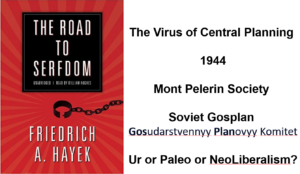

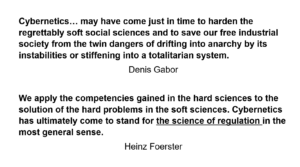

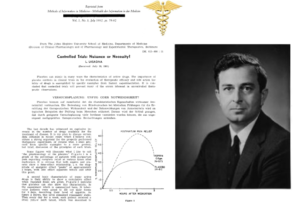

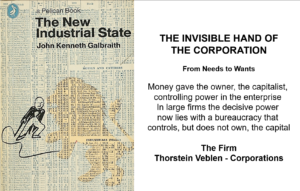
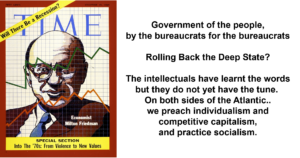
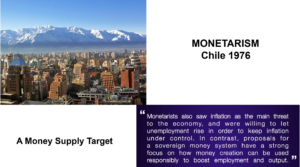





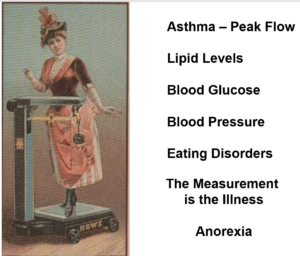

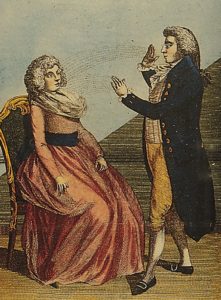
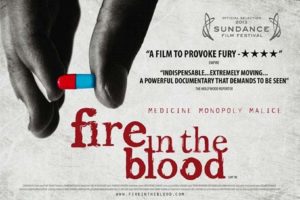
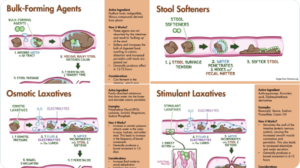
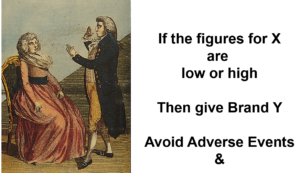
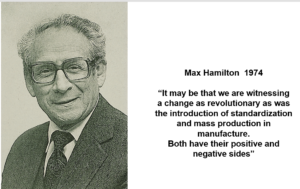
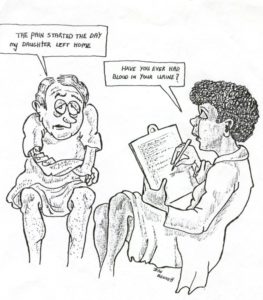
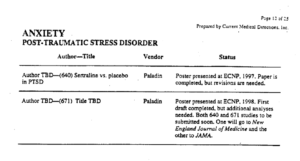
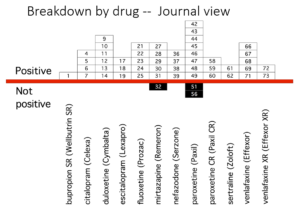
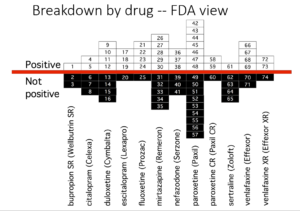
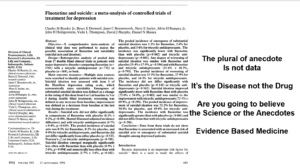

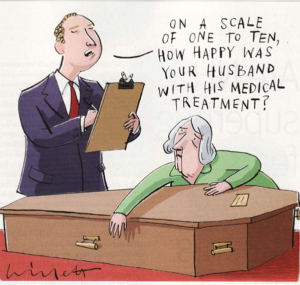


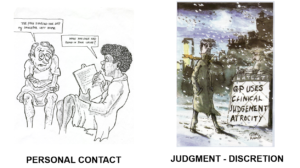

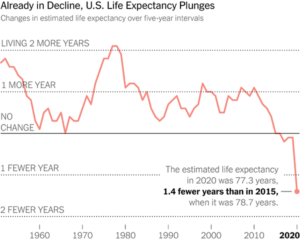


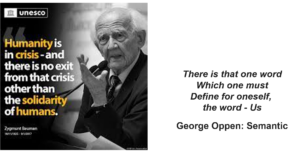






Slide 27:
Coroner asks drug regulator to review advice about ciprofloxacin after doctor’s suicide
BMJ 2023; 381 doi: https://doi.org/10.1136/bmj.p1418 (Published 20 June 2023)Cite this as: BMJ 2023;381:p1418
https://www.bmj.com/content/381/bmj.p1418
A coroner has given a warning about a rare side effect of the antibiotic ciprofloxacin, after a recently retired consultant cardiologist with no history of mental health problems hanged himself 11 days after he began taking the drug.1
Robert Stevenson, described by the coroner Martin Fleming as a “very respected and experienced” consultant, retired from his job at Huddersfield Royal Infirmary in west Yorkshire in May 2022 at the age of 63. That same month he was referred for investigation of possible prostate cancer and consulted a private urologist. He was prescribed ciprofloxacin to treat his …
Coroner’s warning over suicide risk side effect of common NHS antibiotic Ciprofloxacin after newly retired doctor, 63, killed himself a week after being prescribed it
Robert Stevenson had no mental health problems before starting Ciprofloxacin
https://www.dailymail.co.uk/news/article-12211059/Coroner-issues-warning-suicide-risk-effect-common-NHS-antibiotic-Ciprofloxacin.html
The hearing was told Dr Stevenson, 63, hadn’t been told about a ‘potential rare link’ to suicidal behaviour in patients who took the drug, as this wasn’t in line with medical guidance.
‘I am therefore concerned that this potential risk has not been given sufficient emphasis.
‘I would ask you to consider the appropriateness of reviewing the current guidelines as to the dispensation of the drug to patients by clinicians and increasing the awareness of the side effect in order to monitor and mitigate the risks.’
The MHRA have until August 1 to respond.
European Medicines Agency
Public hearing on quinolone and fluoroquinolone medicines
https://www.ema.europa.eu/en/documents/other/public-hearing-quinolone-fluoroquinolone-written-interventions_en.pdf
Quinism Foundation
February, 12, 2018 | 18 Comments
https://davidhealy.org/quinism/
‘those with Mefloquine problems have faced difficulties from Roche that so many others taking fluoroquinolones and other compounds have faced from other companies…
Slide 27:
‘you may end up with treatment-resistant constipation.
Drugs are not magic bullets. They offer therapeutic principles.
Exactly the same thing happens with antihypertensives, hypoglycemic agents, antidepressants and almost all the drugs we consume. Very few doctors currently consider that they need to have the clinical skills to decide which of these drugs you should take.’
Maybe STAT could do with a Dose of AI…
Patrick may have a splutter,
https://samizdathealth.org/obedience-pills/
‘Falling through the cracks’: Why ADHD is under-diagnosed among Asian Americans
By Olivia Goldhill
June 19, 2023
https://www.statnews.com/2023/06/19/adhd-asian-americans-underdiagnosis-research/?
When he first decided to study how ADHD plays out in Asian Americans and Native Hawaiians and Pacific Islanders, Goh searched for existing research, expecting to find a foundation of knowledge that he could build off. Nothing came up. “I was like, ‘Oh, no one’s doing this?’” he said. “Someone needs to do it.”
The lack of knowledge isn’t simply within peer-reviewed journals. Chen said she also did a thorough literature review, and couldn’t even find master’s theses or Ph.D. dissertations that were relevant.
Without research and conversation, there’s no clear answer as to why Asian Americans are less likely to be diagnosed for ADHD, but there are plenty of theories.
Slide 50: The ethics of technology resembles the ethics of medicine: the challenge is to obtain good from evil, where evil means an absence of good. Poisons and technologies are morally neutral. The result we get from your employment is up to us.
The government has a moral duty to help those harmed by prescribed dependence forming drugs
BMJ 2023; 381 doi: https://doi.org/10.1136/bmj.p1417 (Published 20 June 2023)
Cite this as: BMJ 2023;381:p1417
Article
Metrics
Responses
An open letter by healthcare professionals calls for specialist NHS services to support patients harmed by taking prescription medications
This week, BBC1’s Panorama drew sharp attention to the problem of prescribed drug dependence and withdrawal in the United Kingdom, providing insight into an iatrogenic problem affecting large numbers of people internationally. While this has been a problem for decades, the Panorama programme shows that there are still almost no NHS services to support patients who have been harmed by taking medicines as prescribed by their doctor, such as antidepressants and benzodiazepines. In the absence of these services, the programme detailed how patients experiencing severe and prolonged withdrawal symptoms have resorted to online peer groups for validation, support, and safe drug tapering advice. The patient community, it seems, has been forced to develop its own withdrawal protocols (e.g. for antidepressants) in the absence of sufficient tapering guidance being advanced by NICE (The National Institute for Health and Care Excellence) or any other national clinical guidelines internationally.12
The scale of the prescribed drug dependence and withdrawal problem in England was revealed in 2019, when Public Health England (PHE) published a comprehensive evidence review of dependence forming drugs.3 It showed that 26% of the adult population in the England was prescribed a dependence forming drug in the previous year, for example, antidepressants, benzodiazepines, Z-drugs, GABA-ergic and opioids, and that there are substantial levels of unnecessary prescribing of these drugs in the community (i.e. prescribing beyond what clinical guidelines advise, and/or for indications where there is no clear evidence of efficacy). Such unnecessary prescribing has recently been estimated to cost the NHS in England over £500 million each year in medicines, consultation, and pharmacy dispensing costs alone,4 before considering the adverse side effects of these medications on people’s health and wellbeing. This adds a significant economic burden to the likely mounting disability cost of patients suffering the effects of severe and protracted withdrawal.
Panorama’s discussion of the urgent need for support services reflects a key recommendation of PHE’s 2019 review, which called for a national 24 hour helpline and associated website to provide support to patients experiencing prescribed drug dependence and withdrawal.25 This call was also endorsed in October 2019 by some medical royal colleges and medical institutions, including the British Medical Association, the Royal College of Psychiatrists, and the Royal College of General Practitioners.
An oversight group was established within NHS England to oversee the implementation of the recommendations of PHE’s review, including the national helpline and website. However, according to Panorama, the funding was denied for the helpline, despite the low cost of provision. In addition, the oversight group was quietly disbanded leaving no one to follow through on the recommendations.
Therefore, despite all the evidence reviews, media interest and public awareness, nothing has changed. In fact, the situation has worsened, with one of the last remaining withdrawal charities and local helplines (the Bristol and District Tranquiliser Project) being forced to close its doors this summer as its funding has been removed. Furthermore, while NHS England has now published a commissioning framework calling for local support services for prescribed drug dependence, no additional funding has been provided to enable this, making implementation unlikely.
We believe that the NHS has a clinical and moral obligation to help those who have been harmed by taking their medication as prescribed. Panorama has revealed the scale of the problem and the horrendous impact it has had on so many people’s lives. To help mitigate these impacts, we therefore urgently call upon the UK government to fund and implement withdrawal support services, including a national helpline.
Footnotes
Signatories: James Davies, associate professor of medical anthropology and psychology, University of Roehampton, London; Mark Horowitz, honorary research fellow, University College London; Luke Montagu, All-Party Parliamentary Group for Prescribed Drug Dependency, Westminster, London; Sheila Hollins, professor of psychiatry, St Georges, University of London; John Read, professor of clinical psychology, University of East London; Joanna Moncrieff, professor of critical and social psychiatry, University College London; Marcantonio Spada, professor of addictive behaviours, London South Bank University; Nigel Crisp, House of Lords, Westminster, London; Anne Guy, All-Party Parliamentary Group for Prescribed Drug Dependency, Westminster, London; Peter Gøtzsche, professor of clinical trials, Centre of Scientific Freedom, Denmark; Fiammetta Cosci, associate professor of clinical psychology at the University of Florence; Sami Timimi, visiting professor of child psychiatry and mental health improvement at the University of Lincoln; Antonio E. Nardi, professor of psychiatry, Federal University of Rio de Janeiro; Michael Hengartner, senior lecturer in psychology, Zurich University of Applied Sciences; Guy Chouinard, professor of clinical pharmacology, McGill University; Bogdan Chiva Giurca, College of Medicine Council Member and Social Prescribing Champion at the National Academy for Social Prescribing.
Yes there is no help to come off psych drugs, in fact if you tell your psych your coming off them you’re likely to be put on a CTO and forcefully injected if you do not attend to be injected. There is no way you will get your GP or psych to sign the form for a tapering strip to do it correctly. Nobody dare tell their psych they can stand quetiapine and have come off it.
Chris
The same will happen if you don’t take your statins or hypoglycemics or bisphosponates these days – maybe not CTO but you will be chucked off the doctors list. This is not a specific mental health issues
D
Heavily invested in Risk?
Slide 24: In 1970 the word “risk” appeared 200 times in the titles of university articles. In 1990 it was listed in 20,000 titles. We now have venture companies, as Ulrich Bech had told us. Corporations and consultants worked on how to capitalize on this. The numbers – like the hypothesis of low serotonin levels – create a moral obligation on people to reach the right ones.
Norman’s Wisdom…
Blasphemers begone
Cancelled …by the NHS
NORMAN FENTON
22 JUN 2023
https://wherearethenumbers.substack.com/p/blasphemers-begone?utm_source=post-email-title&publication_id=1229032&post_id=130008167&isFreemail=true&utm_medium=email
A few weeks ago I was invited to present our work on Bayesian networks for the NHS Health and Care Analytics Conference 2023. This is a large and important conference chaired by Ben Goldacre (the author of the best seller ‘Bad Science’) – sold out with over 400 delegates and a similar number online.
Of course this is just the latest – albeit a particularly nasty – example of the censorship and cancellation I’ve suffered for the last three years.
As Martin noted on twitter:
Note that in censoring Norman they are also censoring research undertaken by young researchers who have not uttered a public word on the subject of vaccines. Also bear in mind the results of this research were largely funded by the public purse, hence the event committee are denying the NHS access to research results funded by another arm of government. The decision is not only unethical and irrational, it is deliberately vindictive.
Title: Bayesian networks: what are they and why they work when ‘big data’ methods fail
Abstract
Misunderstandings about risk, statistics and probability often lead to flawed decision-making in many critical areas such as medicine, finance, law, defence, and transport. The ‘big data’ revolution was intended to at least partly address these concerns by removing reliance on subjective judgments. However, even where (relevant) big data are available there are fundamental limitations to what can be achieved through pure machine learning techniques. This talk will explain the successes and challenges in using causal probabilistic models of risk – based on a technique called Bayesian networks – in providing powerful decision-support and accurate predictions by combining minimal data with expert judgment. The talk will provide examples in chronic diseases.
The talk is targeted at anybody interested in quantifying and predicting risk.
https://www.msn.com/en-gb/health/medical/heart-deaths-surge-by-more-than-500-a-week-since-pandemic/ar-AA1cSgsQ?ocid=msedgdhp&pc=U531&cvid=e978f20b6854445fb3e2563cd3f8d337&ei=10
But deep down, did the Creator win in the original myth? Did He Bring Good from the Devil?
Combining AI and Drug Discovery in Europe
https://www.labiotech.eu/best-biotech/ai-drug-discovery-europe/
Exscientia
Location: Oxford, UK
Founded: 2012
Exscientia was one of the first companies to apply AI technology to drug discovery. Its focus is to quickly identify and optimize drug candidates that are more likely to succeed in clinical trials than those selected by conventional means.
The company’s first AI-designed drug candidate, to treat obsessive-compulsive disorder, began human testing in a phase I trial earlier this year. It took Exscientia 12 months to bring the candidate to clinical trials rather than the average time of around five years. More recently, the company announced it was working with US partners to apply its technology to searching for drug candidates to treat Covid-19.
“This year was the first to have an AI-designed drug but by the end of the decade all new drugs could potentially be created by AI,” said Prof Hopkins.
https://www.bbc.co.uk/news/technology-51315462
Before they even get to simulating drug behavior, many companies are applying machine learning to the problem of identifying targets. Exscientia and others use natural-language processing to mine data from vast archives of scientific reports going back decades, including hundreds of thousands of published gene sequences and millions of academic papers. The information extracted from these documents is encoded in knowledge graphs—a way to organize data that captures links including causal relationships such as “A causes B.” Machine-learning models can then predict which targets might be the most promising ones to focus on in trying to treat a particular disease.
https://www.technologyreview.com/2023/02/15/1067904/ai-automation-drug-development/
Applying natural-language processing to data mining is not new, but pharmaceutical companies, including the bigger players, are now making it a key part of their process, hoping it can help them find connections that humans might have missed.
Jim Weatherall, vice president of data science and AI at AstraZeneca, says that getting AI to crawl through lots of biomedical data has helped him and his team find a few drug targets they would not otherwise have considered. “It’s made a real difference,” he says. “No human is going to read millions of biology papers.” Weatherall says the technique has revealed connections between things that might seem unrelated, such as a recent finding and a forgotten result from 10 years ago. “Our biologists then go and look at that and see if it makes sense,” says Weatherall. It’s still early days for this target-identification technique, though. He says it will be “some years” before any AstraZeneca drugs that result from it go into clinical trials.
king new science insights
https://www.astrazeneca.com/r-d/data-science-and-ai.html
At AstraZeneca we harness data and technology to maximise time for the discovery and delivery of potential new medicines. Data science and artificial intelligence (AI) are embedded across our R&D to enable our scientists to push the boundaries of science to deliver life-changing medicines.
“Rapid developments in AI technology have brought us in to uncharted territory, and companies and regulators must work together to meet the new challenges posed. Our principles will empower us and our partners to navigate this new environment safely and effectively.”
“But deep down”
Pushing the boundaries; Subs may implode…
Former government Chief Scientific Adviser Sir Patrick Vallance to continue serving on ARIA Board.
Published
27 June 2023
https://www.gov.uk/government/news/sir-patrick-vallance-stays-on-at-the-uks-agency-for-world-changing-ideas
Former government Chief Scientific Adviser Sir Patrick Vallance to continue serving on ARIA Board
Sir Patrick brings a wealth of experience from industry, government and academia
ARIA’s non-executive directors play an integral role supporting ARIA’s mission to fund high-risk, high-reward research – they include the former Chair of the UK
Vaccine Taskforce, a Nobel Prize winner and policy experts
Science and Technology Secretary Chloe Smith has today (Tuesday 27 June) formally appointed Sir Patrick Vallance to continue serving on the Advanced
Research and Invention Agency’s (ARIA) board. The former government Chief Scientific Adviser has been appointed as a Non-Executive Director.
ARIA was formally established at the start of the year, and is an independent body tasked with creating transformational research programmes with the potential to create new technological capabilities for the benefit of humanity
It is a key part of the government’s plans to build a better future with innovation at the heart of the Prime Minister’s priorities of growing the economy and improving lives
Sir Patrick provided invaluable support in the establishment of ARIA, and served on the ARIA board in his capacity as the government’s Chief Scientific Advisor until departing that role earlier this year.
He brings a wealth of knowledge and experience to the organisation. Before taking the government role that thrust him into the spotlight during the response to the Covid-19 pandemic, Sir Patrick held several senior roles at pharmaceutical giant
GlaxoSmithKline, and before that he led the Division of Medicine at University College London and worked in the NHS.
Secretary of State for Science, Innovation and Technology Chloe Smith said:
The UK has led the way in scientific discoveries and pioneering technology throughout modern history, from the discovery of penicillin, to the first computer, through to cutting-edge work today on genomic medicines and quantum computing that is on the cusp of delivering transformative benefits to us all.
ARIA’s ability to empower UK scientists and researchers to take risks to explore the very boundaries of the unknown will be vital to our ambitions as a science superpower. Adding Sir Patrick’s enormous wealth of experience will give the Agency, and UK science overall, another formidable asset to call upon as the global race for science and technology leadership heats up.
Sir Patrick Vallance said
I am delighted to continue serving on ARIA’s founding board and I look forward to supporting the Agency as it forges ahead with its mission to take bold bets that amplify the strengths of our world-class research ecosystem.
ARIA Chief Executive Officer Dr Ilan Gur said:
Sir Patrick has already been an invaluable mentor in shaping the agency, drawing on his global leadership in applying scientific research for the benefit of humanity.
I’m thrilled that Sir Patrick will continue to serve on ARIA’s board. His guidance will be vital as we prepare to launch a first set of transformative R&D programmes later this year.
Sir Patrick will join a slate of Non-Executives already providing strategic direction to the organisation.
Matt Clifford MBE (Non-Executive Chair), co-founder and CEO of Entrepreneur First, co-founder and non-executive director of Code First Girls, has served as a Council Member at Innovate UK, and is a Trustee of the Kennedy Memorial Trust.
Stephen Cohen, a UK Civil Service Commissioner and a Commissioner for the Gambling Commission, who has over 40 years’ experience in asset management, in Asia, Europe and the USA.
Professor Sir David MacMillan, a Nobel Prize winning organic chemist and the James S. McDonnell Distinguished University Professor of Chemistry at Princeton University.
Sarah Hunter, public policy expert who has worked across Silicon Valley and London. She is the former Global Director of Public Policy at X, the Moonshot Factory.
Dame Kate Bingham (DBE), Managing Partner at SV Health Investors and former Chair of the UK Vaccine Taskforce.
Professor Dame Angela McLean, government Chief Scientific Adviser. She is also Head of the Government Science and Engineering Profession.
ARIA has been designed with a unique level of freedom which puts trust in the decisions of experts in their field and empowers them to quickly allocate funding in support of their ambitious vision.
https://study329.org/correspondence-with-gsk/
Correspondence with GSK
and Patrick Vallance (President of Pharmaceutical R&D) …
Prediction…
Edward Dowd Retweeted
Robert F. Kennedy Jr
@RobertKennedyJr
Replying to
@DowdEdward
Prediction;Fear that the COVID vaccine is the culprit will keep NIH from honestly investigating the cause(s) of this shocking trend
https://www.youtube.com/watch?v=5LLk_xB071s
The ObserverPharmaceuticals industry
‘It’s naive to think this is in the best interests of the NHS.’ How Big Pharma’s millions are influencing healthcare
Observer investigation shows drug company money flows through the NHS, raising questions about conflict of interest
https://www.theguardian.com/business/2023/jul/08/its-naive-to-think-this-is-in-the-best-interests-of-the-nhs-how-big-pharmas-millions-are-influencing-healthcare?CMP=share_btn_tw
chief executive Sir Andrew Witty promising to reform the organisation in the wake of the “shameful” and “deeply disappointing” allegations in China.
https://www.theguardian.com/business/2014/apr/14/gsk-accused-bribing-doctors-poland
In December, Witty promised that GSK would stop making any payments to doctors. “We recognise that we have an important role to play in providing doctors with information about our medicines, but this must be done clearly, transparently and without any perception of conflict of interest,” he said.
In 2012, GSK paid a record $3bn (£1.9bn) in fines to settle claims that bribed US doctors into prescribing antidepressants for non-approved uses.
“Would they be comfortable knowing that Big Pharma was funding their care potentially to increase the use of one of their drugs?”
“Professor Dee Mangin, a professor of general practice and family medicine at University of Otago, said the findings underlined the influence of the pharmaceutical industry over the supply chain – “from research to delivery of drugs”. “All drugs have side effects and this drives more sales,” she said. “It is naive to consider this is in the best interest of the NHS.”
Has The Guardian discovered its ‘inner’ Sarah Boseley?
recovery&renewal Retweeted
Prof. Peter C Gøtzsche
@PGtzsche1
“All medicines have potential side effects” (a BBC message about slimming pills like Ozempic causing suicidality) https://bbc.com/news/health-66119059… No, they are not potential. All medicines cause side effects, which we do not call side effects but harms.
Weight-loss jabs investigated for suicide risk
https://www.bbc.co.uk/news/health-66119059
Europe’s drugs regulator has told BBC News it is conducting a review of some weight-loss jabs after being alerted to a possible link to thoughts of suicide and self-harm among users.
Member state Iceland notified the European Medicines Agency after seeing three cases.
The safety assessment will look at Wegovy, Saxenda and similar drugs, such as Ozempic, that help curb appetite.
Product leaflets already list suicidal thoughts as a possible side effect.
Suicidal behaviour is not currently listed for these prescription drugs.
Always on the case, Wendy Burn wants to be told about any ‘changes’; being ‘articulate’ is not one of the finer points of ‘drug induced oblivion’ – it is most often a solitary ending
https://twitter.com/PGtzsche1/status/1678390109756948484
Kim Witczak
@woodymatters
Here we go again!!!
recovery&renewal Retweeted
Dan Johnson
@DanJohnsonAB
·
1h
Replying to
@PGtzsche1
“No side effects from Prozac” would be a hopeful statement in the 1970s, likely false in the 1980s, nonsense in the 1990s, bizarre in the 2000s, a shame on the medical community during following decades, and criminal now.
How splendidly articulate…
Let’s have a look at this trial…
recovery&renewal Retweeted
Mark Horowitz
@markhoro
Another pitiful decision by the FDA based on a pitiful study. Escitalopram is more likely to make a children suicidal than to produce remission from anxiety in the pivotal trial but it has been approved from 7 to 11 years for this indication. Explained brilliantly by
@PloederlM
https://twitter.com/markhoro/status/1678846289646157825
Pfluft
@PloederlM
·
Jul 10
1/ Escitalopram now approved for generalized anxiety disorders for children & adolescents. FDA considers it as safe and effective for this new indication, based on a recent RCT. Let’s have a look at this trial ->
twitter.com/CarlatPsych/st…
1/ – 13/
https://twitter.com/PloederlM/status/1678268123386970112
Pfluft
@PloederlM
12/ Thus, relative to placebo, children and adolescents exposed to escitalopram were more likely to become suicidal than to experience an improvement in anxiety. These results are concerning and the conclusions in the article can be considered as a classical spin.
Pfluft
@PloederlM
13/ Credit to @HengartnerMP and @markhoro who helped in preparing the letter we submitted to the journal. No response from the journal yet (letter is only one-page), after ca 2 months. Perhaps tweeting about it has more impact than the letter.
Aye,
Dan Johnson
@DanJohnsonAB
·
5h
Thank you three, for your service. And others.
Dan Johnson
@DanJohnsonAB
·
4h
As an outsider from a different science, it’s amazing to me that apparently for a century psychiatry has generally lacked the main thing we in the other sciences ask every day: where’s the evidence?
Where’s the madness?
https://www.scientificfreedom.dk/wp-content/uploads/2023/06/John-Read-about-the-story-of-psychiatry-clean.pdf
We can say, however, that antidepressants failed to lift the depression sufficiently to prevent 2,718 hangings, 2,329 overdoses, 440 cases of jumping or falling to one’s death, 126 cases of shooting oneself, and 40 of setting oneself on fire. In none of the 3,543 cases for which the coroner reached a clear ‘suicide’ verdict can antidepressants be reasonably described as effective. In somewhere between 40 per cent and 80 per cent of the overdoses, the medicines prescribed to help prevent suicide were used to commit suicide.”1
The findings were reported in at least two national newspapers, which led Dr Adrian James, president of the Royal College of Psychiatrists, to write to the papers, saying,
“I was disappointed to read your article, which has potential to unjustifiably worry readers who are taking antidepressant medication or know someone who is. The study cited in your article found some individuals who died by suicide were taking antidepressants at the time. This is mere association. It does not demonstrate a causal link. It is a fundamental principle of science that correlation does not equate to causation. To suggest otherwise is simply wrong.”
There was more, but the above led psychiatrist David Healy, founder of RxISK, an independent drug safety website, to respond to Dr James, “Your press release risks harming patients and their families more than the article you criticise. “The authors of the paper … took care to get the wording right. They note that, in the case of suicides in people taking antidepressants, the antidepressants were clearly not working. They do not say they caused the suicide.”1
He goes on to say that, at inquests, doctors do not claim an antidepressant caused a suicide primarily because the doctors are advised by defence unions not to blame the drug. (Off the record, lawyers for medical defence unions have conceded this, he says elsewhere.3 ) “This is a business matter. Rather than support a doctor to help a family at a time of great distress, and support him to advance public safety, defence unions seek to avoid further costs.”
recovery&renewal Retweeted
Pfluft
@PloederlM
·
2h
Time to retweet: since it became clear that Fluoxetine has tiny efficacy in children/adolescents in 2021 (it was recommended as the only antidepr w meaningful efficacy before), I did not see ANY effort to take back the earlier recommendation. Did I miss something?
Pfluft
@PloederlM
·
Aug 22, 2022
Have there been any notable efforts by mainstream psychiatry to correct the common practice to use predominantly Fluoxetine as antidepressant in young people, based on the 2016 Cipriani MA, which contrasts the recent Cochrane MA where efficacy of Fluoxetine imploded?
“And so it goes on, round and round, staying schtum, hands tied…
“Revolution to”
Whooping up Covid…
Pregnant women urged to get booster jab after study shows babies at high risk of serious Covid
Story by Tom Bawden • 3h ago
https://www.msn.com/en-gb/health/familyhealth/pregnant-women-urged-to-get-booster-jab-after-study-shows-babies-at-high-risk-of-serious-covid/ar-AA1dVHLX?ocid=msedgdhp&pc=U531&cvid=bd69d298d2be41bd96fc62ece8c00447&ei=9
“While most of the time these babies are fine in the end, …
‘Covid sent my wife into psychosis — then she took her own life’
The husband of a woman who killed herself said she felt the virus had triggered her problems and was ‘eating her brain’
https://www.thetimes.co.uk/article/8132d484-2308-11ee-8315-87f1387eebf8?shareToken=3ad4753868d22d53461f58dda6128a63
Over the following months, she developed a belief that she had long Covid and became increasingly obsessed with online forums about the condition and fearful she was going to die. She was prescribed antidepressants and began showing signs of becoming suicidal.
“She just wasn’t herself,” said Kirk, from Woking, and she became increasingly irrational.
However, Dr Adrian James, the outgoing president of the Royal College of Psychiatrists, said case reports of Covid-19-associated psychosis had been reported since mid-2020, with patients exhibiting schizophrenia-like and mania-like symptoms.
recovery&renewal Retweeted
Simon
@PSSDSimon
@DrAdrianJames
fails to point out that she was prescribed antidepressants before she started a habit of walking into traffic.
Walking in to traffic…
Eli Lilly and Prozac…
Coroner’s court probes dead youth’s use of Prozac
2 Feb, 2010
https://www.nzherald.co.nz/nz/coroners-court-probes-dead-youths-use-of-prozac/FKCCWBB3525GDDM6DULOLSZE4Q/
unconscious…
Posted on Monday 19 September 2011
https://1boringoldman.com/index.php/2011/09/19/unconscious/
Watching Dr. Healy last night [david healy and robert whitaker…], I was awed by his encyclopedic grasp of the topic of suicidality with the antidepressant drugs – seemingly one topic, but it moved among the world of advertising, cartoons, media reports, psychiatry, academic medicine, the pharmaceutical industry, the medical literature, history of medicine, and myth – painting a collage of something very large hidden in plain sight. It gives the impression that it’s all linked by some sinister intelligence pulling the puppet strings. While not denying that there are unsavory motives peppered throughout the various elements in this story, I expect that most of the people involved are just looking at their particular corner of the world, and failing to connect all the pieces that reveal the whole picture.
That was just a quick run through, but the point is that the whole history of the story is in that “grain of sand” – again, hidden in plain view. We owe a debt of gratitude to the people like David Healy, Robert Whitaker, Casper, Bernard Carroll, Paul Thacker, Allen Jones, and the countless others who smelled this rat and gave us the tools to begin to read between the lines [from the top down as well as the bottom up]. The only way to make a dent in this sorry edifice is to keep linking the elements until denial is no longer even possible. I guess my Freudian roots are showing here, but unconsciousness is how all this works, and in this case, it’s been the enemy from the start – actively maintained by people with something to gain from it…
All day long…
Andrew Green
@DrAndrewGreen
Tonight’s episode of @BBCNews reminded me of a 1990s drug rep’s presentation
‘turning point’ for Eli Lilly?
https://www.msn.com/en-gb/health/other/alzheimer-s-drug-slows-disease-by-60-hailed-as-turning-point/ar-AA1dYSbs
However, the treatment was not without some serious side effects such as brain swelling, which occurred in up to a third of patients in the donanemab trial.
For most, the issue resolved without causing symptoms. But there were three deaths that were linked to taking the medication, with at least two thought to be the result of swelling or bleeds.
Experts said patients will need to be aware of risks of treatment so they can choose whether they take these drugs.
“Serious side effect- three deaths”
Maria and Toran…
‘Shame and Secrecy’ …
louis appleby
@ProfLAppleby
PM @RishiSunak answering q about #SuicidePrevention at #PMQs. Important moment, given the history of shame & secrecy surrounding suicide.
Later this year? I read the near-final draft today.
https://twitter.com/ProfLAppleby/status/1681755619450126336
Prof. Peter C Gøtzsche
@PGtzsche1
·
Jul 18
Psychiatry professor Robert Howard says at Royal College of Psychiatrists International Congress that depression drugs are no better than placebo in people with dementia but he uses the drugs as placebos because “people get better.” He ignores the drugs have serious harms!
https://twitter.com/PGtzsche1/status/1681270401844891648
“generally people are sensible and they get it”
Shame and Secrecy
This is total madness.
My mother at 89 was in hospital from a fall. I flew down to Kent, straight to the hospital, and mother was delirious. They are pushing me down a drain, don’t let them push me down the drain.
On and on it went. Back at our house, a mad doctor had given my mother antidepressants which I found on the kitchen table. In the hospital no one knew, and she was cold turkeying hence the delusions. I spent days talking her round, until eventually it wore off and she came back to her sanity. Regrettably, she never returned to her home and spent five years in a private nursing home relatively peacefully. Although one doctor did remark, we considered giving her antidepressants, but then we thought we wouldn’t know if anything was wrong with her. I put them right on that score…
Interesting piece from Maryanne…
Reflections on the term “placebo”
https://trusttheevidence.substack.com/p/story-of-influenza-antivirals-part-6c8
TOM JEFFERSON CARL HENEGHAN, AND MARYANNE DEMASI, PHD
20 JUL 2023
(Graphics courtesy of Peter Doshi)
The bottom line appears to be that often the term “placebo”, taken at face value, may conceal differences which could affect study results. And take any trial published in biomedical journals with a pinch of salt.
The ‘Shame and the Secrecy’ is alive and well…
Evan Davis, BBC R4 PM, calls Robert Kennedy, Jr “Unhinged” …
I would be very careful Evan Davis. Robert Kennedy, Jr Eats up people like you, legally, before breakfast
46.50
https://www.bbc.co.uk/sounds/play/m001nvs3
1. Twitter Files: Who Are the People Claiming RFK Jr. is “Disinformation”?
https://twitter.com/RobertKennedyJr
This is the same Evan Davis, interviewing Andrew Witty, at Chatham House, who did not call Andrew Witty “unhinged” but took a magnanimous view of Paroxetine/Seroxat by not mentioning it at all…
https://www.youtube.com/watch?v=LP6kPJXwAJo
Corporate Leader Series: Sir Andrew Witty…
The ‘Censorship’ Story – ‘the hurler of a dead cat into the temple.’
Edward Dowd Retweeted
Jeffrey A Tucker
@jeffreyatucker
·
18h
RFK was the adult in the room. He was the preacher of fidelity in the brothel, the keeper of memory in a room full of amnesiacs, the practitioner of sanity in the sanatorium, or, as Mencken might say, the hurler of a dead cat into the temple.
The Free Speech Scare
BY JEFFREY A. TUCKER JULY 21, 2023
https://brownstone.org/articles/the-free-speech-scare/
RFK was compelled to give a short tutorial
WATCH!
Come Offit…
https://www.youtube.com/watch?v=tGoJeLyMG5I
Biff, Bam, Wakefield, Antivaxers…Distractions, Condescensions galore…
“The antivaxers are not interested in history” …
Sparks and Spikes…
Prof Norman Fenton
@profnfenton
More comedy gold on causes of excess deaths. Of course, the only ‘dangerous theory’ implied in the article is the (unspecified) ‘conspiracy theory’ by ‘anti-vaxxers’. They can’t even bring themselves to say what that theory is
Experts call for urgent investigation as excess deaths spark ‘dangerous’ theories
https://www.express.co.uk/life-style/health/1794096/excess-deaths-dangerous-theories
An urgent investigation is needed into why excess deaths are near pandemic levels, because the lack of an explanation is fuelling “wild and dangerous theories”, experts warn.
He said: “A refusal to openly discuss these statistics is an abdication of responsibility from parts of the scientific community, leading to an irreversible erosion of trust by parts of society.
and we’re taking action to reduce them.
Edward Dowd
@DowdEdward
·
Jul 23
Only the willingly blind are puzzled at this point.
https://twitter.com/VigilantFox/status/1681465985310552070
Dowd ended by commenting, “61 standard deviations is lights out, black swan event, something’s gone off the rails. It’s so many zeros and so unlikely to happen by accident that it has to be explained. And that’s what we’re calling on the medical community to explain this. That’s it.”
FND with John
FND with Italians…
Dr. Augusto Germán Roux Retweeted
Nohj85
@Nohj_85
·
Jul 20
Here is @ITV recent segment from @thismorning –
Covering the topic of FND (Functional Neurological Disorder)
For anyone who has or knows someone recently given this diagnosis, I’d highly recommend you listen!
FND is seemingly an increasingly easy excuse for a vaccine injury
https://twitter.com/Nohj_85/status/1682030756049354765
recovery&renewal Retweeted
Tom Kindlon
@TomKindlon
·
2h
An example of why FND is not a desirable diagnostic label:
“Psychiatrists’ attitudes towards functional neurological disorders: results from a national survey”
https://www.frontiersin.org/articles/10.3389/fpsyt.2023.1216756/full
“Italian psychiatrists have a psychogenetic conceptualization of FND”
For instance, from a qualitative analysis of the results of the two surveys, we found that these two health professionals consider each other to be, respectively, not adequate for FND. Indeed, many psychiatrists believe neurologists are not appropriate for managing FND, and, vice versa, many neurologists thought that psychiatry is rarely useful for FND.
John, severely Vaccine Injured, from the ‘homeland’, seems inordinately qualified to talk about FND, with his usual sense of the entirely justified and Scoottish wit…
https://twitter.com/Nohj_85
‘Safe and effective a second opinion’ …
£$£$£$£$£$s…
Dr Aseem Malhotra
@DrAseemMalhotra
BREAKING BMJ INVESTIGATION:
‘Medical royal colleges receive MILLIONS from drug and medical device companies’ The Royal College of GPs & Royal College of Physicians top the list ‘
The biggest donor overall was PFIZER’
Totally unacceptable
I feel sick
https://bmj.com/content/382/bmj.p1658
recovery&renewal Retweeted
Kim Witczak
@woodymatters
Great piece in the BMJ about how Medical royal colleges do not always disclose publicly the millions of pounds they receive from drug & device companies.
Huge problem and incentivizes to keep quiet on harms & buys loyalty.
@DrAseemMalhotra
Dr. Aseem Malhotra, a high-profile cardiologist and an outspoken critic of the COVID-19 vaccines told The Epoch Times by email that he was “absolutely shocked that medical royal colleges are taking millions of pounds from pharmaceutical and medical device companies.”
MP Urges ‘Full and Mandatory Disclosure’ After Pharmaceutical Funding Investigation
Medical Royal Colleges received £9 million in marketing payments from drug and medical device companies
https://www.theepochtimes.com/world/mp-urges-full-and-mandatory-disclosure-after-pharmaceutical-funding-investigation-5426725
“The evidence of Big Pharma excesses and manipulations are at the very root of deteriorating mental and physical health of the population is overwhelming,” he added.
“The longer the royal colleges continue to take money from Big Pharma the longer it will take to restore trust in the medical profession,” he said.
Isn’t it time to knock ‘anti-vaxxer’ on the head…
Justin Webb, BBC R4 Today, (2.41.26) talking about Democratic nominations; is not a fringe candidate like Robert Kennedy, Jr, the anti-vaxxer…
Cancelled by the NHS: An (heavily redacted) update
…from a “hardcore anti-vaxxer”!
NORMAN FENTON
31 JUL 2023
https://wherearethenumbers.substack.com/p/cancelled-by-the-nhs-an-heavily-redacted?utm_source=post-email-title&publication_id=1229032&post_id=135542574&isFreemail=true&utm_medium=email
Last month I reported on how I got cancelled from the NHS Health and Care Analytics Conference 2023.
Blasphemers begone
https://wherearethenumbers.substack.com/p/blasphemers-begone
In response, I sent the following (more or less the same) subject access request letter to the various organisations involved in the conference, namely Birmingham University who hosted the conference, The NHS Strategy Unit, who organised the conference, and the various NHS Trusts supporting the conference.
Subject access request (relating to cancellation of my presentation to Health and Care Analytics Conference 2023.
‘Following the cancellation of my presentation on Bayesian networks to the Health and Care Analytics Conference 2023 as described in this article: https://wherearethenumbers.substack.com/p/blasphemers-begone please supply copies of all emails and other available electronic communications between conference committee members (including the co-chair Ben Goldacre) and others in which my name or conference contribution is mentioned.’
For those who don’t wish to wade through it all, here are some ‘highlights’:
There follows several examples of the emails they received, but the most revealing information is this ‘Teams data’ transcript at the end; dates are not provided (I assume the ‘Monday’ messages were 19 June) except for the last one dated 20 June at 15:43. This is where I am referred to as a “hardcore anti-vaxxer”. The email informing me of my cancellation was sent just minutes later at 16:08 on 20 June.
* Read the highlights…
I look forward to the eventual responses from the NHS organisers and especially any correspondence involving the event co-chair Ben Goldacre who has so far refused to respond to the many people who have written to him about this.